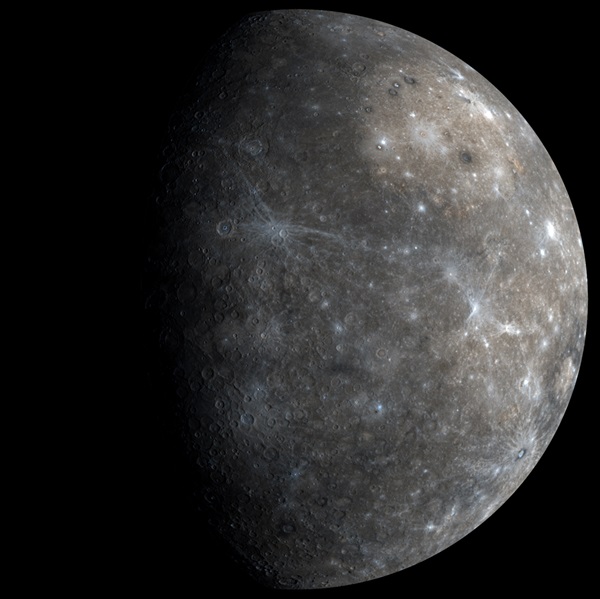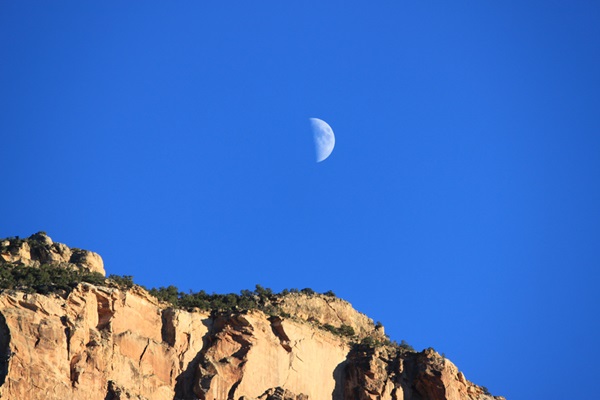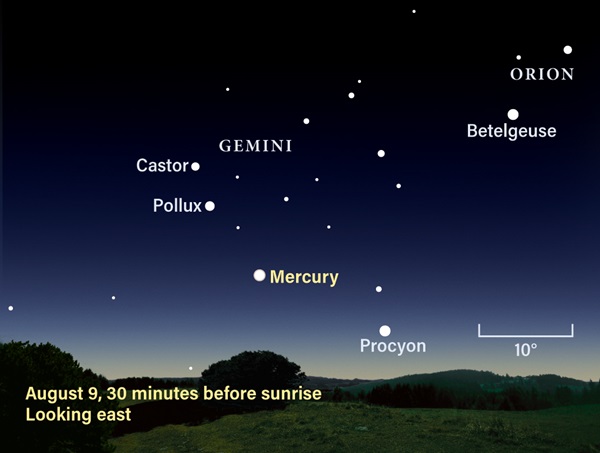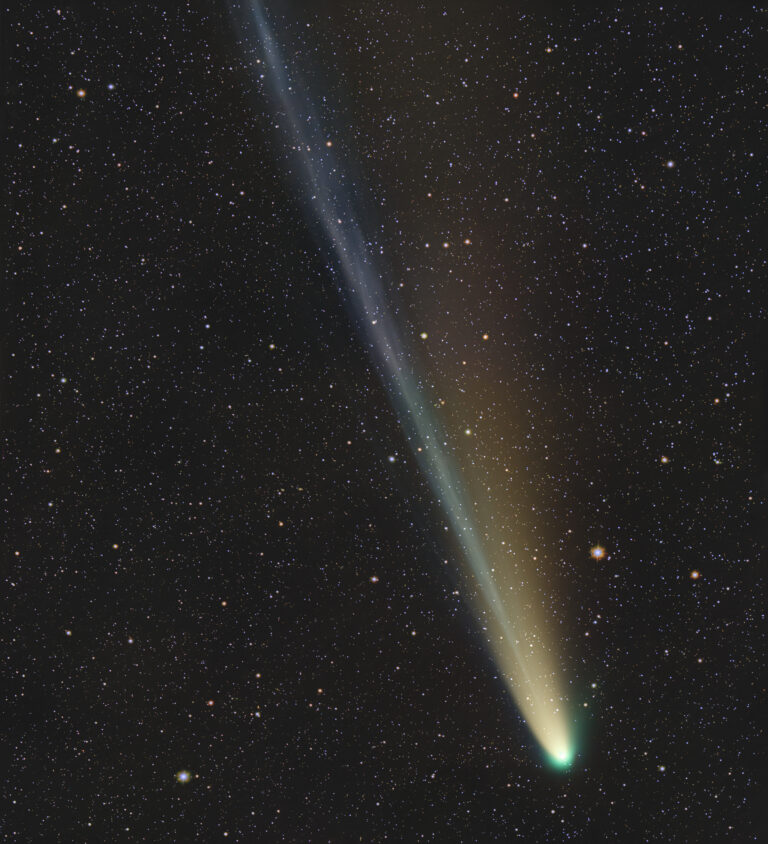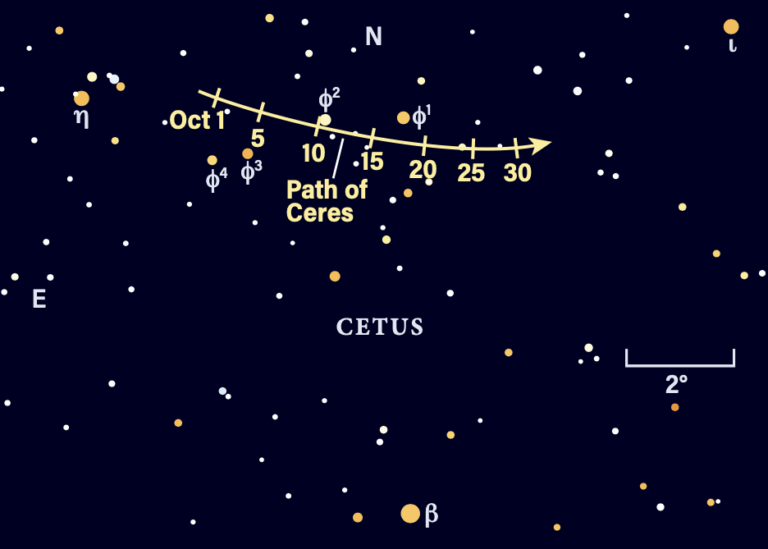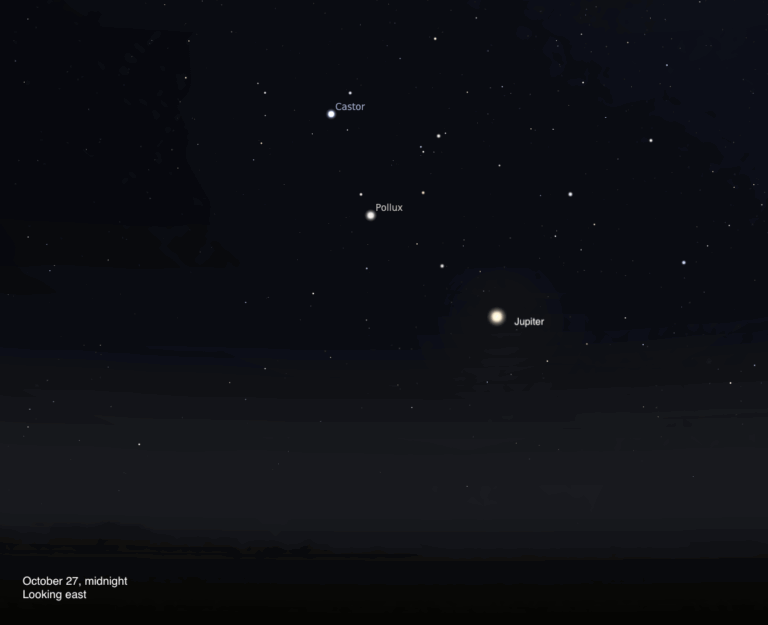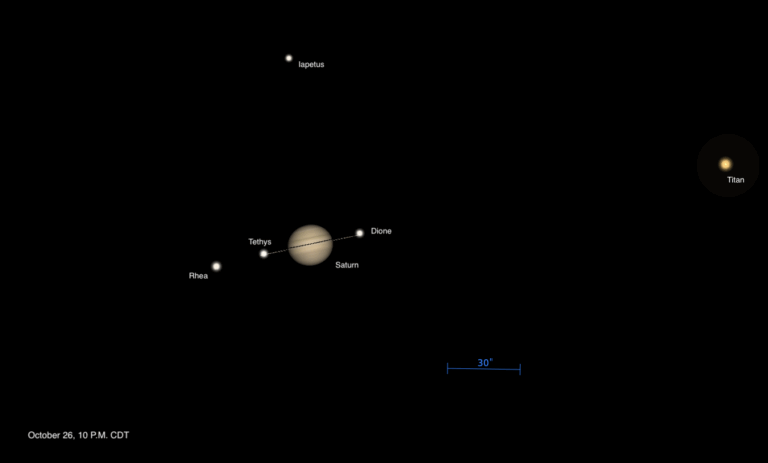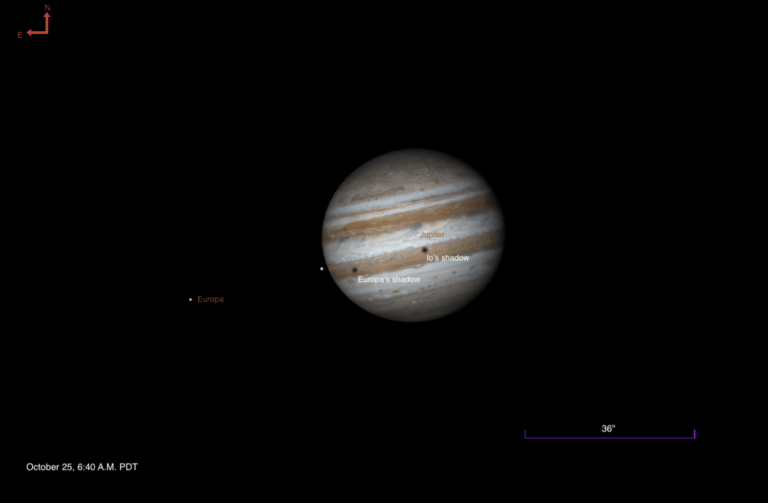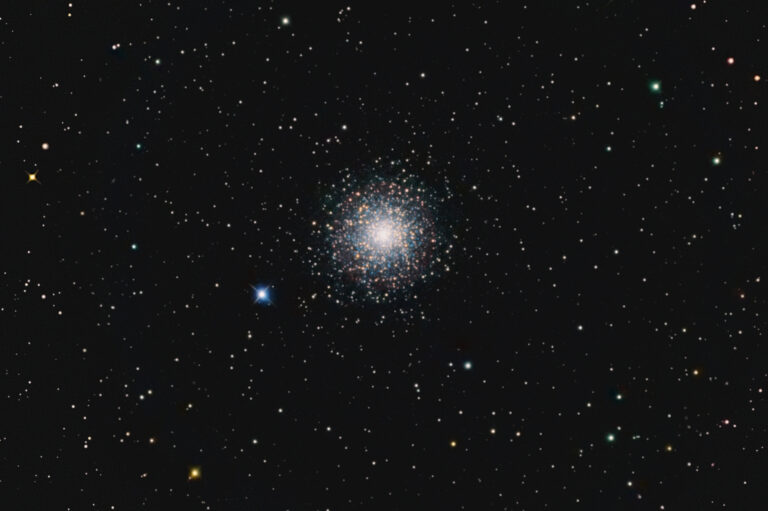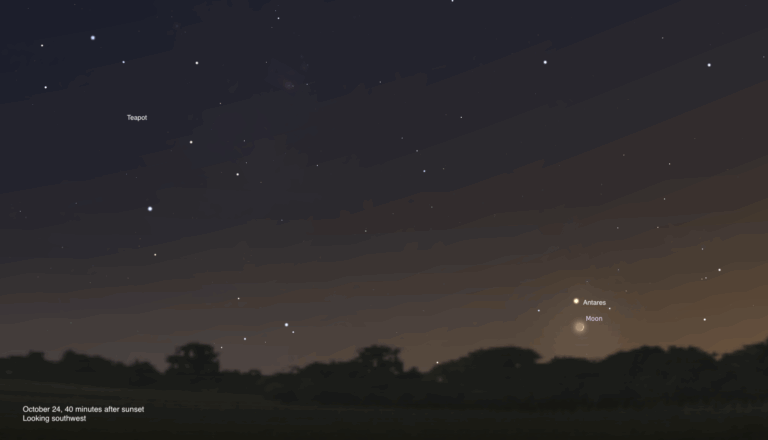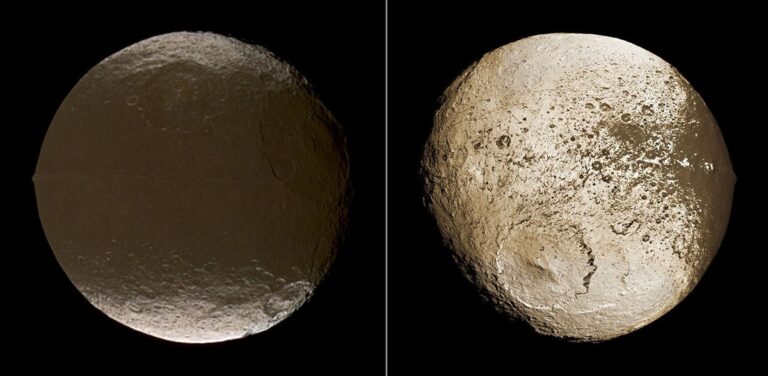Key Takeaways:
- Observations of Mercury's greatest elongation on August 9th are detailed, noting its brightness relative to Castor and Pollux and its observable size and illumination through a telescope.
- The article provides viewing opportunities for various celestial objects, including Uranus (August 3rd), Saturn (August 6th), Jupiter (August 9th), and Neptune (August 10th), specifying optimal viewing times and relative positions to nearby stars.
- Information on the Moon's phases is included, mentioning its perigee on August 2nd and first quarter phase on August 7th.
- The article briefly discusses meteor showers (Southern Delta Aquariids and Perseids), highlighting the diminishing activity of the former and the upcoming peak of the latter.
With the dog days of summer now in full bloom, it shouldn’t come as any surprise to find the season’s namesake asterism, the Summer Triangle, on prominent display. The trio’s brightest member, Vega in the constellation Lyra the Harp, stands nearly overhead around 11 p.m. local daylight time. The asterism’s second-brightest star, Altair in Aquila the Eagle, then lies nearly two-thirds of the way from the southeastern horizon to the zenith. Deneb, the luminary of Cygnus the Swan, marks the Summer Triangle’s third corner. Although it is this asterism’s dimmest star, it’s the brightest point of light in the northeastern sky.
The Moon reaches perigee, the closest point in its orbit around Earth, at 3:11 a.m. EDT. It then lies 223,320 miles (359,398 kilometers) away from us.
Saturday, August 3
Observers of the outer solar system can get a good view of Uranus before dawn. The best time to look for it is shortly before twilight begins around 4 a.m. local daylight time. Uranus then lies 45° high in the east-southeast against the backdrop of southern Aries the Ram. This morning, use binoculars to find the magnitude 5.8 planet 2.3° south-southeast of the magnitude 5.7 star 19 Arietis. A telescope reveals Uranus’ blue-green disk, which spans 3.6″.
Sunday, August 4
Evenings this week are a great time to explore the constellation Sagittarius the Archer. This star group lies due south and at peak altitude between 10 and 11 p.m. local daylight time, well after the last vestiges of twilight have faded away. The brightest stars within the constellation form the shape of a teapot — a distinctive asterism once you’ve found it. The central regions of the Milky Way pass through Sagittarius, so it’s always worth exploring this area through binoculars or a telescope.
Monday, August 5
This week finds observers caught between the peaks of two nice meteor showers. The Southern Delta Aquariid shower reached maximum the night of July 29/30 and has started to diminish, while the Perseid shower is ramping up in preparation for its peak the morning of August 13. Last week’s New Moon means the morning hours currently remain Moon-free. You can tell meteors from the two showers apart by tracing their paths backward. Southern Delta Aquariid meteors appear to radiate from the constellation Aquarius the Water-bearer while Perseid meteors emanate from Perseus the Hero.
Tuesday, August 6
Magnificent Saturn reached its peak four weeks ago, when it appeared opposite the Sun in the sky, and our view of the ringed planet remains spectacular. It is on display from shortly after sunset until nearly 4 a.m. local daylight time. It currently resides among the background stars of Sagittarius the Archer, hanging in the southeastern sky as darkness falls and climbing highest in the south around 11 p.m. Saturn continues to shine brightly, too, at magnitude 0.2. When viewed through a telescope, the dramatic ring system spans 41″ and tilts 25° to our line of sight, while the planet’s family of modestly bright moons appears next to the gorgeous world.
First Quarter Moon occurs at 1:31 p.m. EDT. By the time the Sun sets this evening for North American observers, the Moon appears in the south-southwest and more than one-third of the way from the horizon to the zenith. As darkness descends, our satellite grows more prominent and the background stars of Libra the Scales come into view.
Thursday, August 8
The Big Dipper’s familiar shape appears halfway up the northwestern sky as darkness falls. One of the summer sky’s finest binocular double stars marks the bend of the dipper’s handle. Mizar shines at 2nd magnitude, some six times brighter than its 4th-magnitude companion, Alcor. Even though these two are not physically related, they make a fine sight through binoculars. (People with good eyesight often can split the pair without optical aid.) A small telescope reveals Mizar itself as double — and these components do orbit each other.
Mercury reaches greatest elongation today, when it lies 19° west of the Sun and rises 90 minutes before our star. The innermost planet climbs 7° high in the east-northeast 45 minutes before sunup. The magnitude 0.0 world shines noticeably brighter than the twin stars of Gemini, Castor and Pollux, which lie higher in the sky and point in Mercury’s direction. If you have trouble spotting the planet with your naked eye, scan the area with binoculars. When viewed through a telescope, Mercury shows a disk that spans 7.7″ and appears about 40 percent lit.
Although Jupiter reached opposition and peak visibility two months ago, it remains a stunning sight from shortly after sunset until well past midnight. But it appears especially nice this evening, when a waxing gibbous Moon passes just 2° north (upper left) of the planet. You can find the pair high in the south as darkness falls. Both objects reside among the background stars of Ophiuchus. While the Moon moves on to Sagittarius by tomorrow evening, Jupiter remains in the Serpent-bearer all week. Shining at magnitude –2.4, the giant world is the night sky’s brightest object except for the Moon. When viewed through a telescope, the planet’s disk spans 42″ and shows striking cloud-top detail.
Saturday, August 10
Distant Neptune reaches opposition and peak visibility in just a month, but the view now is essentially the same. The ice giant planet rises around 9:30 p.m. local daylight time and climbs halfway to the zenith in the southern sky by 3 a.m. The magnitude 7.8 planet lies in Aquarius, 0.7° east-northeast of 4th-magnitude Phi (φ) Aquarii. You’ll need binoculars to spy Neptune and a telescope to see its blue-gray disk, which spans 2.4″.
Sunday, August 11
Asteroid 15 Eunomia reaches opposition and peak visibility tomorrow, but the view tonight is essentially the same. The main-belt object traverses the sky from dusk to dawn and climbs halfway to the zenith in the southern sky around 1 a.m. local daylight time. Eunomia shines at magnitude 8.2 and should be easy to find through binoculars under a dark sky and in a 4-inch telescope from the suburbs. The asteroid is currently moving westward against the backdrop of Aquarius the Water-bearer. Tonight, it lies 3.2° west of magnitude 2.9 Beta (β) Aquarii and 1.5° south of two 6th-magnitude suns, 15 and 16 Aqr.

